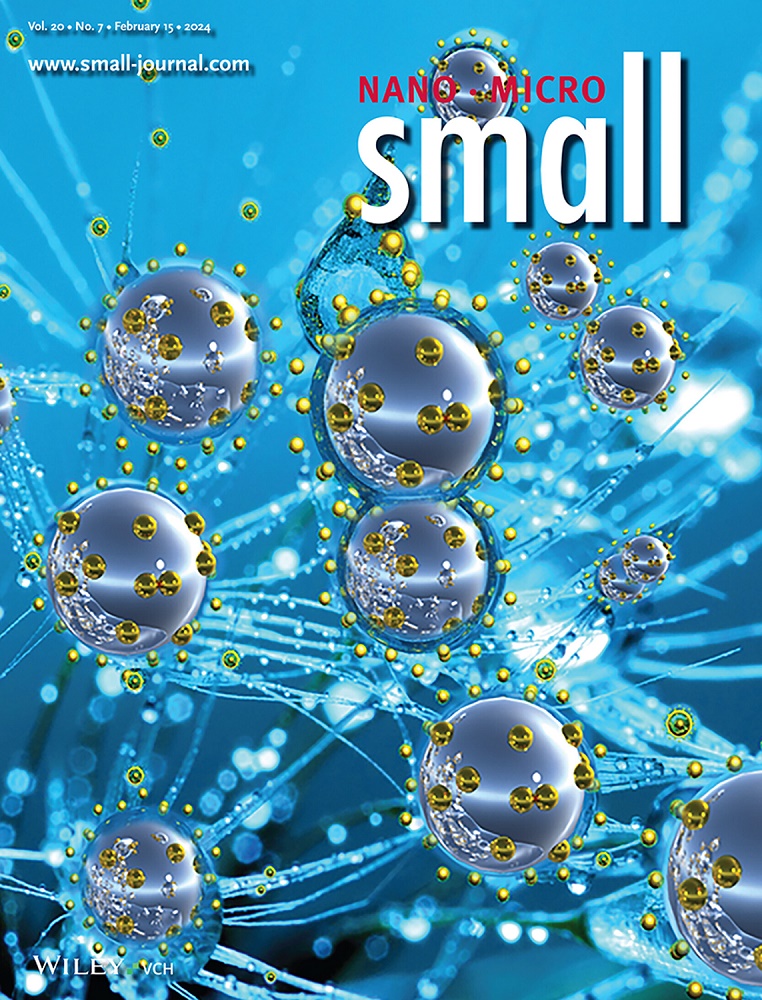非晶化工程与阴离子浸出相结合促进尿素氧化预催化剂重构。
IF 12.1
2区 材料科学
Q1 CHEMISTRY, MULTIDISCIPLINARY
引用次数: 0
摘要
镍基材料已成为一类很有前途的尿素氧化反应预催化剂,但其固有的结构重构行为及其与电催化活性的关系尚不清楚,严重阻碍了先进催化剂的合理设计。本文通过快速共沉淀法和温和热处理法制备了一种新型的非晶mn掺杂NiWO4预催化剂(a- mnni - wo4),并提出了一种加速UOR的预催化剂。有趣的是,松散灵活的非晶相工程和可浸出的WO4 -掺入可以共同促进a-MnNi-WO4在UOR过程中快速完成自我重构,从而生成具有优化电子结构的多孔、富氧、低晶mn掺杂NiOOH,促进尿素吸附和*COO脱附的速率决定步骤。令人印象深刻的是,a-MnNi-WO4可以提供令人钦佩的UOR行为,并且大大优于未掺杂wo42 -或Mn的晶体和非晶态,有利地呈现出最先进的水平。本研究阐明了对促进UOR的预催化剂的重构能力的深入理解,以及通过非晶化工程和牺牲阴离子蚀刻实现快速深度自重构的材料设计原理有望扩展到构建其他先进的电催化体系。本文章由计算机程序翻译,如有差异,请以英文原文为准。
Amorphization Engineering Coupled with Anion Leaching Boosts Precatalyst Reconstruction for Enhanced Urea Oxidation.
Ni-based materials have emerged as a class of promising precatalysts for the urea oxidation reaction (UOR), yet inherent structure-related reconstruction behavior of the precatalyst and correlation with electrocatalytic activity are not well-understood, severely hindering rational design of advanced catalysts. Herein, a new type of precatalyst, amorphous Mn-incorporated NiWO4 (a-MnNi-WO4), is constructed via rapid co-precipitation followed by mild heat treatment, and proposed for expediting the UOR. Intriguingly, loose and flexible amorphous phase engineering and leachable WO4 2- incorporation can collaboratively prompt a-MnNi-WO4 to access fast and complete self-reconstruction during UOR, thus generating porous, oxygen-vacancy-enriched, and low-crystalline Mn-doped NiOOH with optimized electronic structure for prompting urea adsorption and the rate-determining step of *COO desorption. Impressively, the a-MnNi-WO4 can deliver admirable UOR behavior and considerably outperform the crystalline counterpart as well as the amorphous ones without WO4 2- or Mn species incorporation, favorably presenting the state-of-the-art level. This work elucidates an in-depth understanding of the reconstruction ability of the precatalyst for promoting the UOR, and material design principle for achieving fast and deep self-reconstruction via amorphization engineering and sacrificial anion etching is expected to extend to construct other advanced electrocatalytic systems.
求助全文
通过发布文献求助,成功后即可免费获取论文全文。
去求助
来源期刊

Small
工程技术-材料科学:综合
CiteScore
17.70
自引率
3.80%
发文量
1830
审稿时长
2.1 months
期刊介绍:
Small serves as an exceptional platform for both experimental and theoretical studies in fundamental and applied interdisciplinary research at the nano- and microscale. The journal offers a compelling mix of peer-reviewed Research Articles, Reviews, Perspectives, and Comments.
With a remarkable 2022 Journal Impact Factor of 13.3 (Journal Citation Reports from Clarivate Analytics, 2023), Small remains among the top multidisciplinary journals, covering a wide range of topics at the interface of materials science, chemistry, physics, engineering, medicine, and biology.
Small's readership includes biochemists, biologists, biomedical scientists, chemists, engineers, information technologists, materials scientists, physicists, and theoreticians alike.
 求助内容:
求助内容: 应助结果提醒方式:
应助结果提醒方式:


